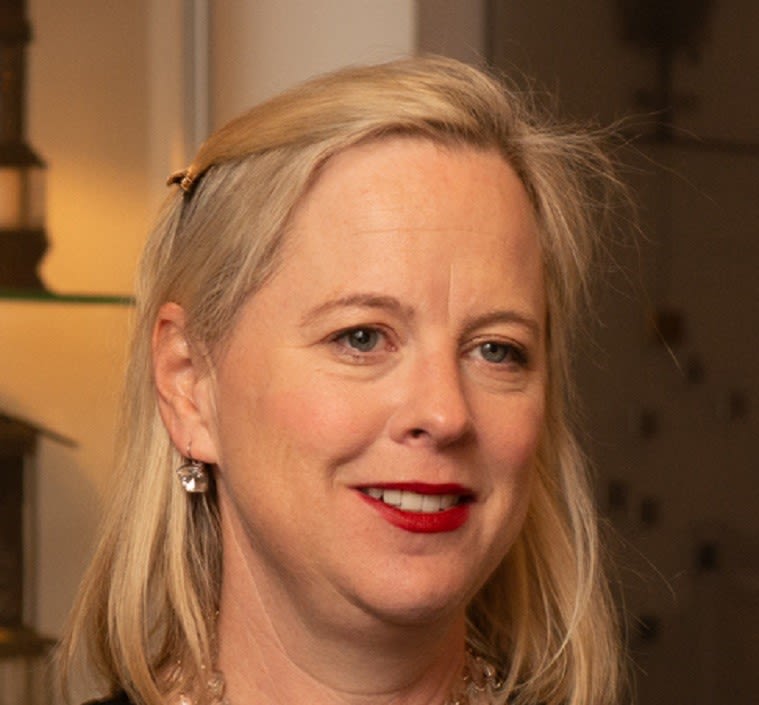Bioelectronic Systems Technology
Róisín Owens

Welcome to the BEST group
Our strategy is based on iterative improvements on the biological models and the electronic devices in parallel. This process is designed to synergistically generate improved systems that can be predictive of real biological systems, and is therefore useful for drug discovery and therapeutics.
Our group combines expertise in a wide range of disciplines including biochemistry, microbiology and cell biology on the 'bio' side, to materials science, electronics and chemistry on the physical sciences and engineering side.
On the materials side, we have generated significant expertise working with organic electronics, specifically conducting polymers that have been shown to be particularly apt at interfacing with biological systems. Organic bioelectronics is a field generating significant buzz in industry and amongst clinicians.
Group leader Professor Róisín Owens carried out two postdoc fellowships at Cornell University on host-pathogen interactions of mycobacterium tuberculosis and on rhinovirus therapeutics.
From 2009 - 2017 she was a group leader in the department of Bioelectronics at Ecole des Mines de St. Etienne, on the Microelectronics campus in Provence. Her current research centres on application of organic electronic materials for monitoring biological systems in vitro, with a specific interest in studying the gut-brain-microbiome axis.
Our members
Group leader

Professor Róisín Owens
Professor Róisín Owens and her research group at CEB investigate, understand and apply biological models to improve health diagnostics and sustainable therapeutics, improving health outcomes for people, and connecting biotechnology with sustainability.
PA to Group leader: Dawn Curtis

The Team

Research Associate
Dr Maria Lopez Cavestany

Research Associate
Dr Rachana Acharya

Research Associate
Dr Douglas van Niekerk

Research Associate
Dr Konstantinos Kallitsis

Research Associate
Dr Zixuan Lu (Henry)

Research Associate
Dr Sarah Barron

Postgraduate student
Imogen Harrison

Postgraduate student
Darius Hoven

Postgraduate student
Juliana Ferraro

Postgraduate student
Sophie Oldroyd

Postgraduate student
Reece McCoy

Postgraduate student
Alexandra Wheeler-Enslin

Postgraduate student
Woojin Yang

Postgraduate student
Emma Sumner

MPhil (Master) student
Shiyun Li (Elsie)

Our research projects
Monitoring of Viral Activity Using Plasma Membrane - Conducting Polymer Chip Assembly
The majority of anti-viral drugs prevent cellular infection by acting on proteins found on host cell membranes. In this project we couple native plasma membranes with organic electronic chips to create biosensors that can distinguish between the different stages of viral entry. Our platform uses a label-free electronic readout, combined with conventional optical readouts (fluorescence) to sense the ability of viruses to bind and fuse with host cell membranes, thereby sensing viral entry. Once a virus fuses with our membrane-chip assembly, its membrane merges with the plasma membrane, further inhibiting ion injection to the conducting polymer film. Our organic electronic chips then transduce this additional ionic barrier to electronic output via conventional electrochemical methods such as electrochemical impedance spectroscopy (EIS). This platform has been validated for different viruses including influenza and SARS-CoV-2, while our end goal is to develop it into a drug-screening tool to assist and re-direct the drug discovery process. This project is funded by the US military agency (DARPA) and is the product of collaboration between the Daniel group at Cornell University and the Salleo group at Stanford University.
Innovative technology solutions to explore effects of the microbiome on intestine and brain pathophysiology
In this project we are generating in vitro models of the gut and brain with integrated monitoring based on our organic electronics device toolbox. The completed model will be used to monitor effects of the microbiome on the gut brain axis. We are building on former expertise in generating models of the gut for pathogen detection, and also expertise in generating a 3D models of different tissues including the blood brain barrier for toxicology experiments. Also interfacing with this work is our ability to generate multi-electrode arrays from conducting polymers for monitoring neuronal activity from 2D and 3D cultures. This is an ERC funded project which started on 1/10/2017.
Confocal image of 3D neurospheres stained for astrocytes (red) and neurons (green). From: Pas et al, "Enhancing electrophysiology recordings with neurospheres via patterned PEDOT:PSS microelectrode arrays”. Advanced Biosystems (2017) doi: 10.1002/adbi.201700164. Copyright Wiley-VCH Verlag GmbH & Co. KGaA. Reproduced with permission.
Cover image illustrating conducting polymer scaffolds used for co-culture of mammalian cells. The cover was designed by Heno Hwang, scientific illustrator, King Abdullah University of Science and Technology. From: Inal et al, "Conducting Polymer Scaffolds for Monitoring 3D Cell Culture”. Advanced Biosystems 1 (6); 1700052 (2017) doi: 10.1002/adbi.201700052. Copyright Wiley-VCH Verlag GmbH & Co. KGaA. Reproduced with permission.
Tissue engineering using composite conducting polymer/bio-polymer scaffolds
We have demonstrated the use of electroactive conducting polymer scaffolds for hosting monitoring cells. These scaffolds are easily blended with biopolymers such as collagen which can be used as a tool to modulate biochemical and mechanical properties of the scaffolds. Thanks to their electrical properties, the scaffolds can be used to stimulate cells electrically which has been shown to alter/enhance differentiation and proliferation of cells under certain conditions.
News

Publications
Driven by curiosity. Driving change.
Photos © Martin Bond





